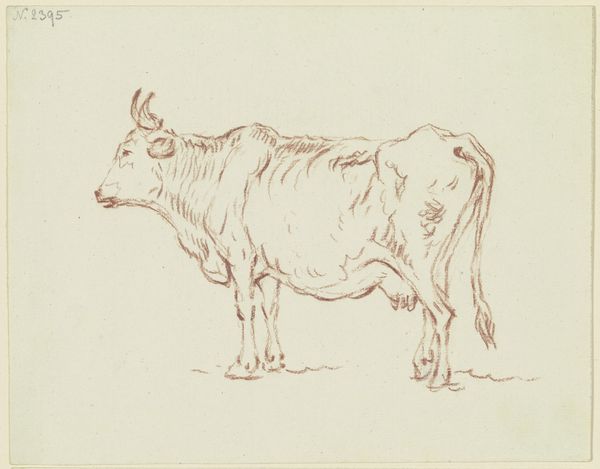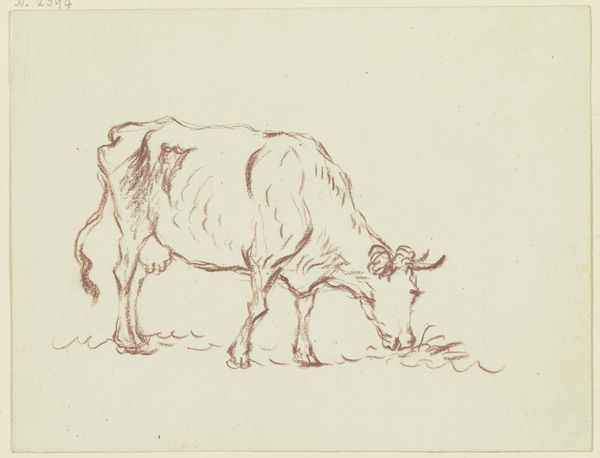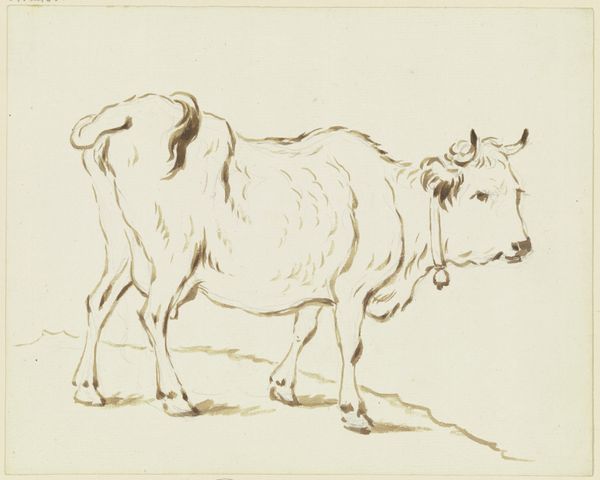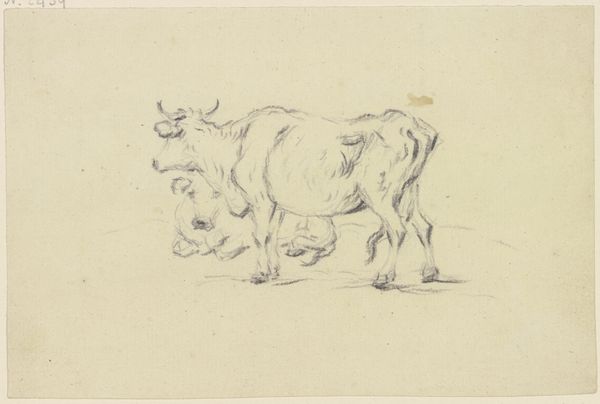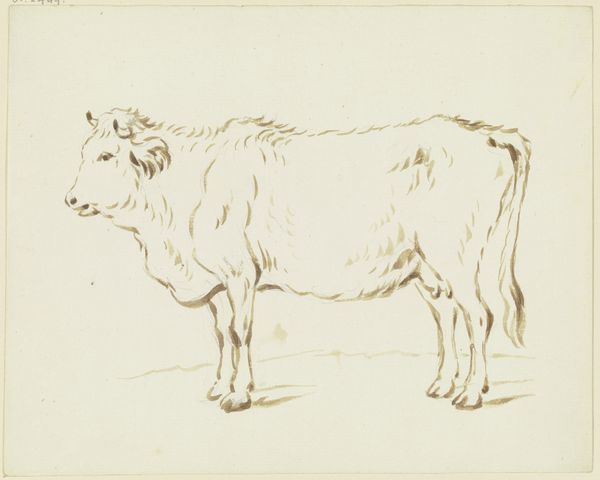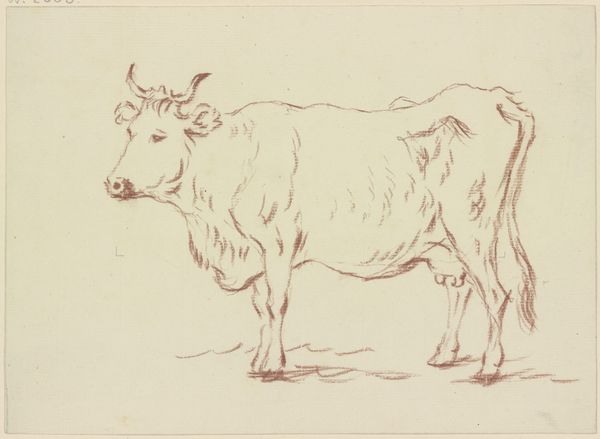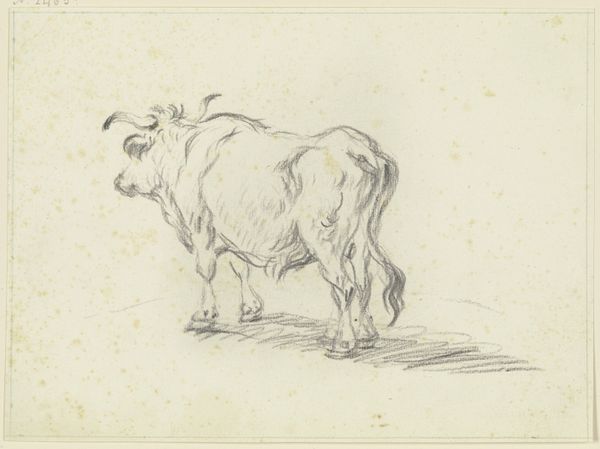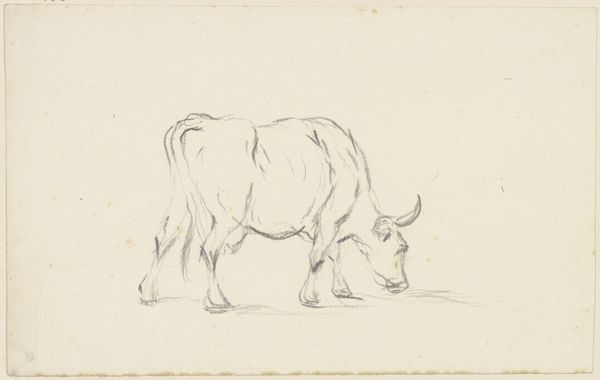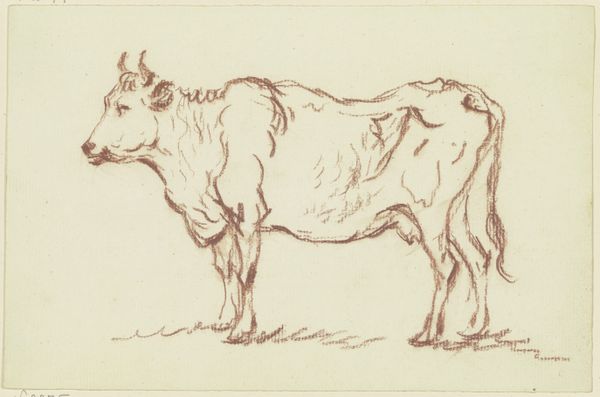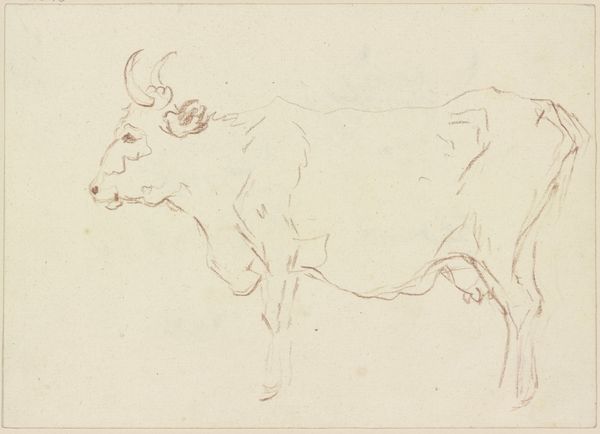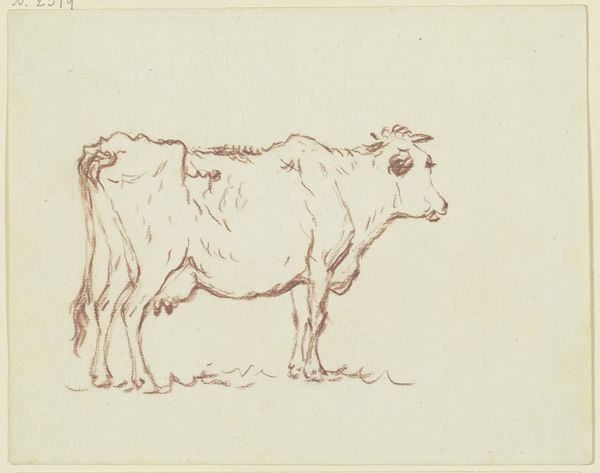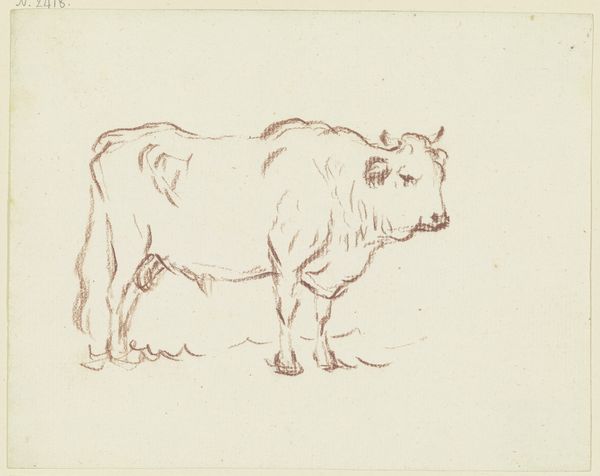
Stehende Kuh nach links, in Verkürzung halb von vorn gesehen
0:00
0:00
drawing, red-chalk, dry-media, charcoal
#
drawing
#
animal
#
red-chalk
#
landscape
#
etching
#
figuration
#
dry-media
#
personal sketchbook
#
pen-ink sketch
#
charcoal
Copyright: Public Domain
Editor: This drawing, titled "Stehende Kuh nach links, in Verkürzung halb von vorn gesehen"—"Standing Cow to the Left, Foreshortened and Seen Half from the Front"—is by Friedrich Wilhelm Hirt, and it’s rendered in red chalk. I’m struck by how simply the artist has captured the animal’s bulk. What do you see in this piece? Curator: I see an interesting glimpse into the artistic practices of the time. This cow isn’t simply a cow; it reflects the social and agricultural landscape. Consider how idealized or romanticized depictions of rural life often served a purpose, masking the realities of labor and social hierarchies. Editor: That's interesting. So, this seemingly simple drawing might have deeper political implications? Curator: Potentially. Think about the patronage system of the era. Who was commissioning or buying art? Often, it was the landed gentry. A drawing like this could serve as a reflection of their idealized vision of pastoral life and their control over land and resources. The focus isn't so much on the animal itself, but rather on its role within a broader socio-economic context. Were drawings of livestock like this a common theme? Editor: Not sure, but I now think this red chalk drawing makes a clear statement that intersects history, society, and the public’s perception of imagery. Curator: Exactly. It's not just art for art’s sake. Museums are key in forming this interpretation of the piece too. We preserve, select, and present artwork to shape the way people think. It really adds layers to what one may believe it to be a simple sketch! Editor: Thank you. I learned something today and it's quite relevant given contemporary conversations about representation and power in art! Curator: Indeed! These historical perspectives remain incredibly relevant in understanding art’s ongoing role in shaping public discourse.
Comments
No comments
Be the first to comment and join the conversation on the ultimate creative platform.

